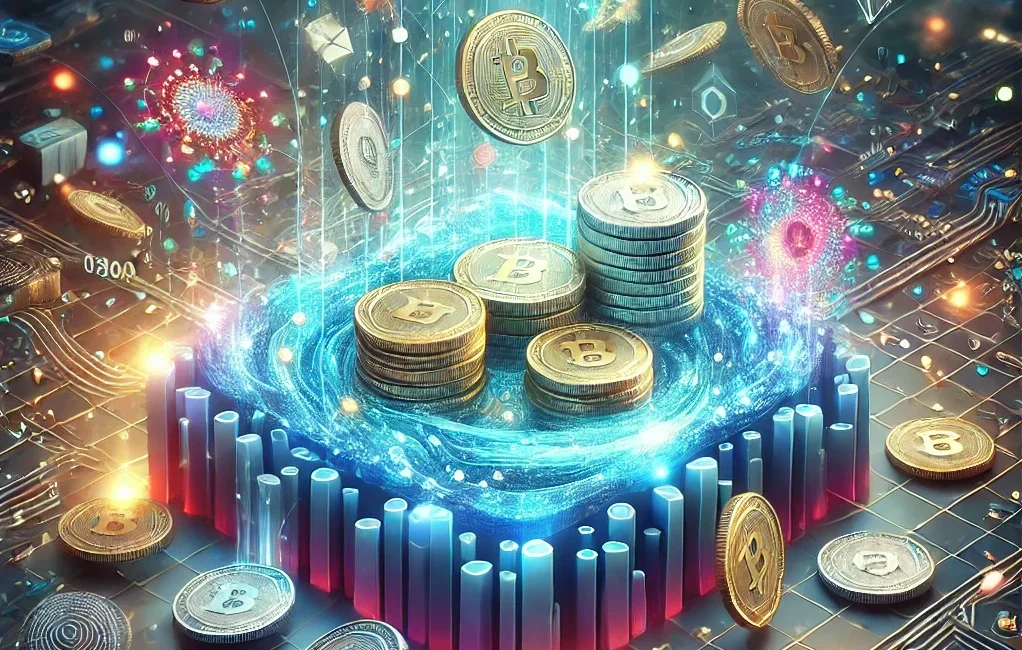Understanding Buy-Back and Burn mechanism
What is the Buy-Back and Burn mechanism?
The buy-back and burn mechanism is a strategy adopted by blockchain projects. In their tokenomics, they put it to manage the supply of their tokens. This method involves the project’s team or governing body using a portion of their profits or reserves to purchase tokens. The acquired tokens are then sent to a so-called “burner” address. This address is a wallet from which tokens are permanently taken out of circulation.
What are Buy-Back and Burn mechanism objectives?
In tokenomics, Buy-Back and Burn mechanism have several objectives:
- Reducing token supply : By decreasing the number of tokens available, the project can create scarcity. This may lead to an increase in the value of the remaining tokens if demand remains constant or increases.
- Aligning stakeholder interests : It signals to token holders that the project members are committed to the project’s success. It also indicate that they are willing to invest in its future, potentially aligning their interests with those of the token holders.
- Enhancing token value : For token holders, the reduction in supply with sustained or increased demand can lead to an appreciation in token value, offering them a tangible benefit.
Learn more: Discovering value in the blockchain ecosystem
Popular projects implementing the Buy-Back and Burn mechanism
Several well-known tokens have implemented the buy-back and burn mechanism in their tokenomics.
- Binance Coin (BNB) : Binance, one of the world’s largest cryptocurrency exchanges, regularly performs quarterly burns of its BNB token. This strategy is part of its commitment to reduce the total token supply by half, ultimately leaving 100 million tokens in circulation.
- Ripple (XRP) : While not employing a continuous burn, Ripple has mechanisms in place that burn a small amount of XRP with each transaction. This decrease supply over time in a less direct manner than a typical buy-back and burn.
Disadvantages of Buy-Back and Burn mechanism
-
Liquidity concerns
One of the primary concerns with the buy-back and burn mechanism is its potential impact on liquidity. In tokenomics, reducing the token supply might initially seem beneficial for increasing token value. However, it can also lead to decreased liquidity in the market. A smaller supply of tokens means fewer tokens are available for trading. This can result in larger price fluctuations with smaller transactions. This volatility can deter both new and seasoned investors, who may seek more stable environments. Furthermore, reduced liquidity can make it challenging for token holders to execute large orders without significantly affecting the token’s price. This potentially leading to a less favorable market for both buyers and sellers.
-
Market manipulation risks
The buy-back and burn mechanism also opens the door to potential market manipulation. Orchestrated buy-backs, especially if not transparently conducted, can lead to artificial price inflation. Projects might time these buy-backs strategically to create a false sense of demand. And it will misleading investors about the token’s true market value. Furthermore, if the details of the buy-backs, such as the amount of tokens to be purchased and the specific timing, are disclosed in advance, it could encourage speculative trading, allowing some investors to profit at the expense of others. This manipulation not only affects the token’s price but also its credibility and the trust of its investor base.
-
Long-term viability
Another critical consideration is the long-term viability of projects that heavily rely on the buy-back and burn mechanism. While reducing the supply of tokens can provide short-term price benefits, it does not inherently add value to the project or enhance the utility of the token. The success of a web3 project is typically measured by its adoption, the utility it provides, and the ecosystem it builds. Relying solely on buy-back and burn to support a token’s value might divert focus from more sustainable growth strategies. This strategies are developing new features, expanding the user base, and forging strategic partnerships. Investors may begin to question whether a project that prioritizes token burning over substantive development can maintain its relevance and utility in the long run.
Alternatives to Buy-Back and Burn mechanism
The buy-back and burn mechanism use in tokenomics, while popular, presents several disadvantages as discussed above and is not the only strategy projects can utilize to manage their supply and provide value to stakeholders. Exploring alternatives to burning tokens can offer a more nuanced approach to enhancing token value, stimulating project growth, and benefiting the community.
Buyback and make
The “Buyback and Make” strategy involves the repurchase of tokens from the market followed by their use in creating new value within the project’s ecosystem rather than burning them. The objective is to reinvest in the project’s growth directly, either by developing new features, expanding services, or funding community projects that contribute to the ecosystem’s overall value.
For token holders, the value comes from the project’s increased potential and sustainability, which can lead to greater demand for the token. Consequently, it lead to an appreciation in its value.
Token redeployment
Token redeployment involves using the bought-back tokens to benefit the community and ecosystem directly. This benefits include funding new projects, providing community rewards, or supporting liquidity pools. This strategy aims to enhance the project’s ecosystem by distributing resources in a way that encourages participation and investment from the community.
The impact on the token ecosystem can be significant, as redeployment strategies can lead to increased engagement, higher transaction volumes, and a more vibrant community. However, the success of this approach depends on the strategic selection of initiatives that receive funding, ensuring they have the potential to contribute positively to the ecosystem’s growth and token value.
Token recirculation for development
Instead of removing tokens from circulation, projects can choose to recirculate them to fund development efforts and innovation. This can include grants for developers or rewards for community-led initiatives. It can also include investment in partnerships that expand the project’s capabilities and reach.
The challenge with token recirculation lies in finding the right balance. Reducing token supply to maintain scarcity or ensuring enough tokens are available to fuel growth initiatives. Successful projects and tokenomics manage this balance by setting clear criteria for recirculation. They also focus on investments that have a high potential to add long-term value to the token and its ecosystem.
Conclusion
Buy-back and burn mechanism has its advantages. However, alternatives like Buyback and make, token redeployment, and token recirculation for development offer additional pathways. It offers projects to enhance value, stimulate growth, and ensure long-term viability. By carefully considering these strategies, projects can not only support their token’s market performance but also build a more robust and dynamic ecosystem.



